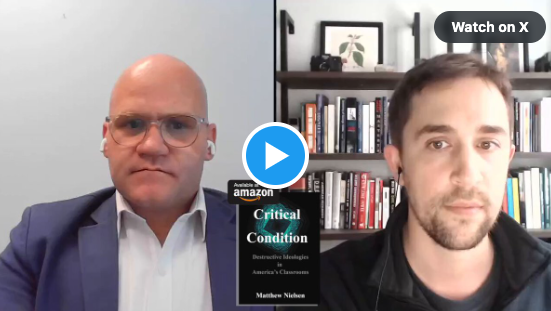By Ben Scafidi and Eric Wearne
Maybe because of public school COVID shutdowns and mandates, or maybe because of several odious and anti-historical ideologies being taught in public schools, Virginia Gov. Glenn Youngkin and a growing number of elected state officials have pledged to give families more school options for their children.
Perhaps the fastest, easiest, and least-resistant route is to permit children to attend tuition-free charter schools rather than residentially assigned traditional public schools.
Our new report for the Educational Freedom Institute (EFI) provides guidance for policymakers looking to identify which states provide the best conditions for charter schools to thrive. We do not prescribe “model laws” or policies dreamed up by so-called experts. Instead, we look at the evidence to see which states provide the most access to charter schools and which states provide the best charter outcomes for students.
Our analysis finds that finds that Washington, DC and Arizona provide the most access and success for charter students.
The outcomes in these two areas have been remarkable. In DC, 44.6 percent of public school students attend charters. In Arizona, over 86 percent of zip codes have a charter school—an environment with nearly universal access to charters for families who want them. Why are so many families in DC and Arizona choosing charters? Perhaps because they have provided excellent outcomes for students. Both DC and Arizona charters have value-added learning gains for students that are among the best in the nation (measured as year-to-year gains for students in Reading and Math scores across all grades).
Unfortunately, national groups that exist to promote a thriving and high-quality charter sector may undermine the effort to give families more educational opportunities. A recent example is the “Ranking of State Public Charter School Laws” produced by the National Alliance of Public Charter Schools (NAPCS). These rankings are comprised of some sensible elements. For example, NAPCS awards points for states that avoid arbitrary caps on charter school growth, in addition to points for transparent application and review processes.
But the NAPCS methodology includes other questionable elements, and, as we discuss in the EFI report, the NAPCS rankings do not accurately reflect which states provide the most promising charter school ecosystems.
Here are two examples. This year’s NAPCS rankings score Alabama (3rd) and Mississippi (7th) highly. Alabama is lauded for having “a cap that allows for ample growth…a state authorizing pathway…strong quality-control components…operational autonomy…and equitable operational and categorical funding to charter schools.” Yet between 2015 and 2019, this law produced a total of two charter schools statewide.
Mississippi’s law is also congratulated for offering “a cap with room for ample growth,” and “a state authorizer…a fair amount of autonomy and accountability…and equitable operational and categorical funding.” Yet Mississippi’s law, passed in 2010, has only allowed the state to open a grand total of three charter schools.
It is hard to imagine how two states that have combined to open five charter schools over this time could be ranked so highly. The NAPCS methodology simply does not accurately identify healthy charter school sectors in the states. Moreover, NAPCS only ranks DC and Arizona 11th and 14th, respectively, where DC and Arizona provide both great access and great outcomes for students.
That’s why we were motivated to produce a new ranking of charter school environments—one that rewards states for providing access and student achievement growth.
Policymakers who want families to have more say over where and how their children are educated should look to policies in states that have the most charter school access and success for students. Unfortunately, model laws from national charter school organizations have been shown to not lead to better environments for students.
Do not look to national groups’ supposedly “model” charter school laws. Yes, Virginia, there is a better charter school law than those offered by the “experts”—look to DC and Arizona if you want to use charter schools to promote the opportunity and success for school-aged children.
Ben Scafidi and Eric Wearne are professors in the Education Economics Center at Kennesaw State University.


